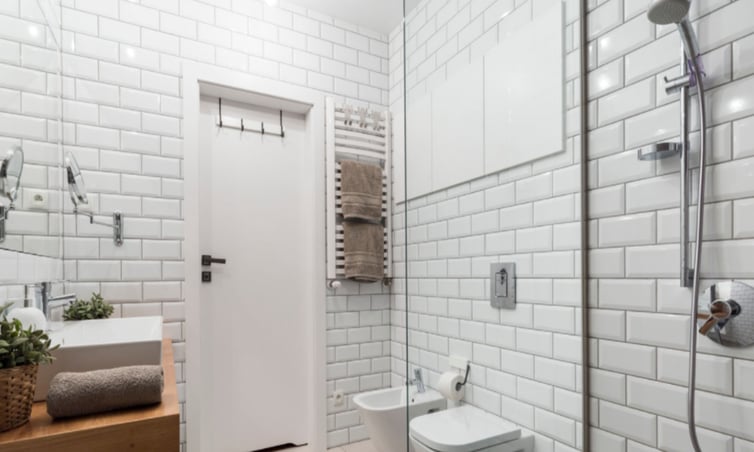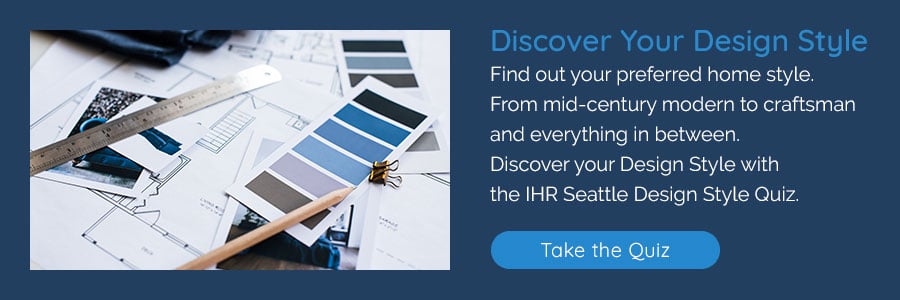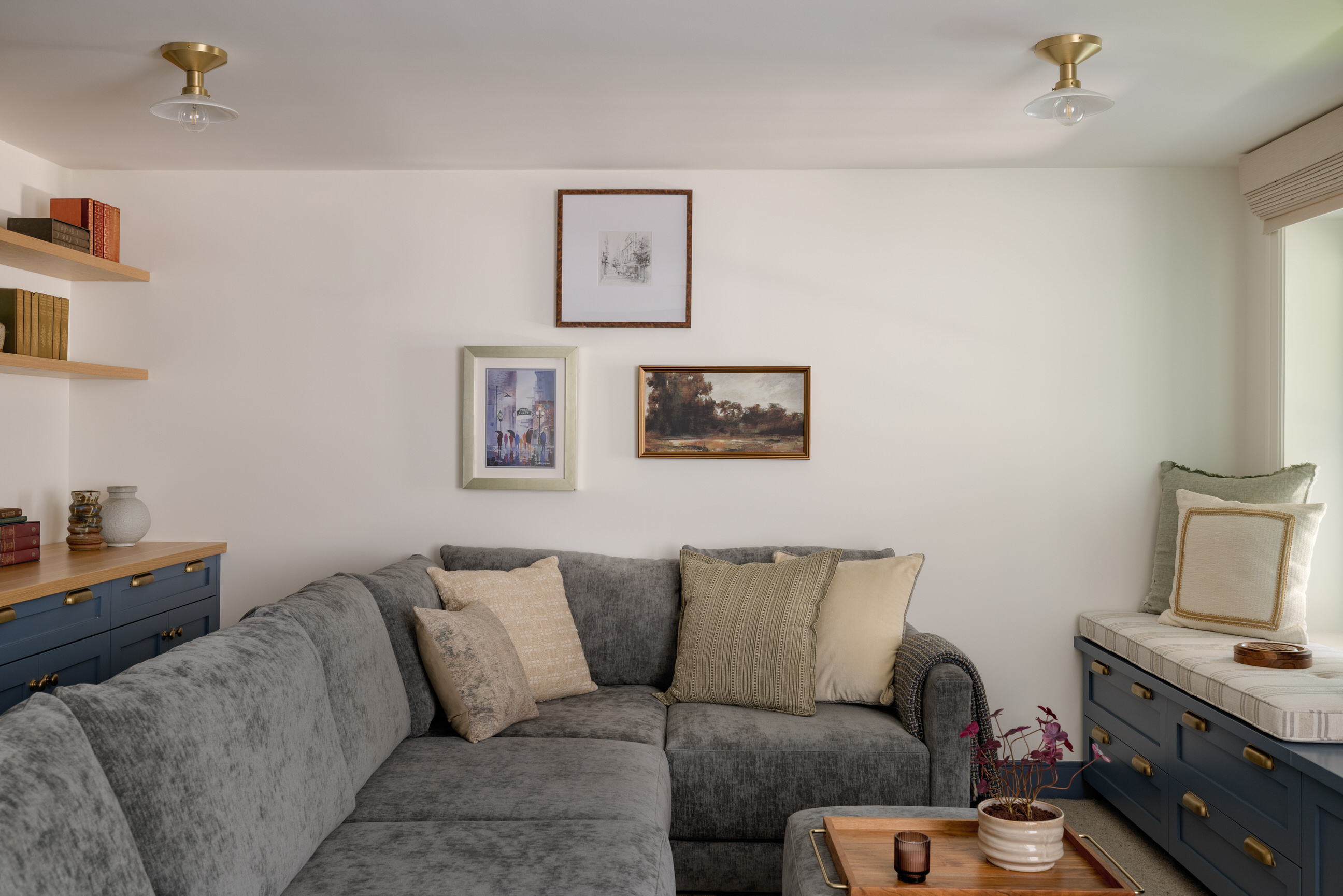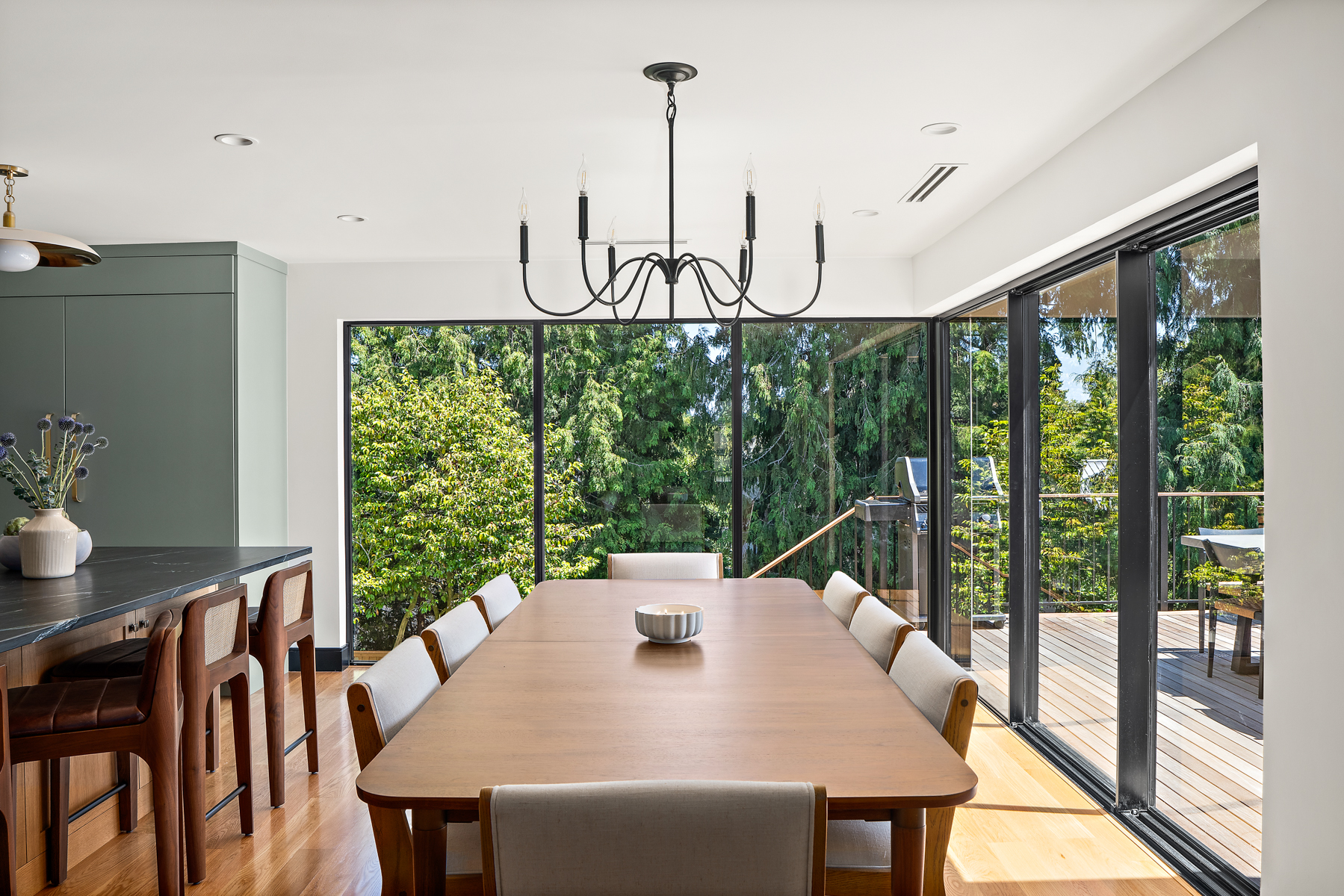Finding the Perfect Tile: How to Satisfy the Needs of Your New Bathroom
You’ve put in the hours with a designer to build out the ideal bathroom floor plan, brainstormed all the amenities and features that will outfit your new space, and now it’s time for the most exciting part: choosing the tile. No matter what your style or budget, tile is the star of any well-designed bathroom. You may be asking, “What materials do I choose from?” and “How do I choose from Turquoise blue and Neptune blue if they look almost identical?” When selecting bathroom tiles, it’s easy to get lost in the extensive world of styles and colors.
How to Narrow Down Your Choices
Aside from its hygienic and cleanability properties, the biggest influence tile can have is its visual impact, whether on your shower walls, floors, or as a decorative backsplash. Regardless of your remodeling needs, here are the main objectives that will help narrow your decisions and provide a clearer path when choosing bathroom tile.
Size Considerations
Flooring Tiles
Bathroom floor tile typically ranges from one-inch squares or penny tiles to larger twelve-to-twenty-four-inch format tiles. It’s important to be mindful of your bathroom’s overall size and the sizes of each tile comparatively that you select. Pairing tiles that are too varied in size can make the larger of the group look gangly, and small tiles in a large master bath can make the pattern feel overwhelming. When in doubt, trust a designer’s perspective for what looks harmonious or what looks awkward in your space.
Shower Floor Tiles
Shower floors require smaller-sized tiles because the floor needs to be sloped so that water drains properly. Smaller tiles also provide greater surface traction because there are more grout lines; these tiles range from one to four inches in size.
Tub/Shower Wall Tiles
There are no restraints on the size of tile in your shower or tub area, but aesthetically there is one component that can affect how we perceive a tile surface: grout lines. Grout can often sway our perception of a surface’s cleanliness because the texture is not as smooth or easy to clean as the tile itself. For this reason, consider sizing up in your shower, particularly when choosing lighter colors. Larger format tiles ranging from six to twelve inches give a more uniform appearance and support a sleek, polished bathroom look.
Wall/Backsplash Tiles
Wall or backsplash tile can range from four-inch squares to twelve by twenty-four rectangles. If you are looking for a tile that can come in a variety of sizes, ceramic tile is a perfect choice. These tiles can size up to 30” long and down to 1” mosaics, making them suitable for quite literally any application!
Patterns and Styles
Subway
Subway tile takes the popular vote for its timeless and simple layout. The length of each tile should be about half its total width so that when stacked with a 33-50% offset, they create a pattern like that of a brick wall.
Stacked (Vertical and Horizontal)
This style is definitely the most relaxed, relying on clean lines and simplicity. You can find this pattern in square or rectangular tiles, always stacked straight on top of one another to create a straight edge at all grout lines.
Hexagon
The beehive mosaic is making waves in the remodeling industry because of its signature fun pattern and geometric aesthetic. This choice works perfect for large or smaller-sized tiles and is a fun alternative to penny or square tiles for the shower floor.
Basketweave
If you enjoy strict geometry but want to add a bit of flair to your tile pattern, basketweave is the way to go. This pattern combines pods of two to three tiles laid side-by-side, repeating where every other “pod” is rotated 90 degrees.
Herringbone
Herringbone tile patterns emphasize direction and movement, creating a layout that grabs your attention and moves in the path of travel. This bold design requires laying rectangular tiles at a 45-degree angle in a V-formation.
Modular
Modular, juxtaposed tile patterns work great for multiple different styles and allow for unique layouts. This pattern is formed by grouping different sizes and shapes together in a repeatable, modular pattern, often seen with rectangular and square tiles.
Random
Here, the design possibilities are endless! Perfect for unconventional spaces, a random pattern with as many as three or four different tile colors can transform your space into something unmatched by any preexisting pattern.
Materials and Characteristics

Maintenance
There are 3 primary traits that contribute to a material’s cleanability: size, texture, and absorption rate. Choosing larger tiles with fewer grout lines will be easier to clean, and it helps to have a smooth surface. Tiles with lots of surface texture will more easily collect dirt and mold, which is only amplified if the material is porous, meaning it absorbs water easily. For example, concrete would be a material to avoid in the bathroom because it is extremely porous and water damage can warp or distort the hand-poured design in the tile. In the end, porcelain, ceramic, glass, and natural stone tile are the easiest to clean and maintain.
Performance
Porcelain by far takes the cake when it comes to overall performance. This durable material is harder, tougher, and denser than even ceramic tile, making it the optimum choice for areas with high foot traffic, exposure to water, and where scratching and chipping are at risk.
Cost
While marble tends to be the highest costing material for floors and backsplashes, ceramic is a classic choice for keeping the budget in check without compromising on beauty. Vinyl tiles that mimic the look of stone may also be a viable option, but ceramic boasts greater variety overall.
Appearance
Ceramic and porcelain steal the show once again in this category. These materials offer extensive choices for size, color, and pattern, and therefore should be kept in the forefront of your mind when browsing. Other unique materials that offer stunning designs include brick, clay, and natural stone such as slate.
Heated Floors
When it comes to this design upgrade, porcelain and ceramic work best. Mineral-based in nature, these tiles conduct heat well and are water-resistant, protecting the underfloor heating system from leakage and accidental damage.
Ceiling Tile
Tiling your ceiling may be a foreign concept to some, but it is becoming increasingly more popular and practical in use. Some of the benefits of tiling your ceiling include having a durable and water-resistant surface that is easy to maintain. After all, tile will not collect dust or trap dirt and mold the way drywall and paint can! Because these tiles will interact with a lot of humidity, it’s safe to steer clear from materials that are extremely porous and go with materials like ceramic that can withstand water over long periods of time.
Interior Design Tip

Bullnose Tile and Pencil Tile Trim
Let’s talk about edge trim. What happens if you are trying to install tile in a spot where there are harsh edges or changes in the tile lay? It wouldn’t look attractive to have the unfinished edge visible, so how do we disguise this so that even where the tile lay ends or changes we ensure a continuous and smooth surface? The answer is bullnose tile! Bullnose tile is characterized by rounded edges which can be used as an edge treatment to cover corners or frame the perimeter of a design. This eliminates sharper angles or unfinished tile edges from being visible on your walls or floor.
If bullnose tile is not an option, try opting for pencil tile or a metal trim in the same finish as the bathroom hardware and plumbing fixtures. Pencil tile is thin and linear. It is primarily used along the edges of a pattern to create borders or to outline an edge where two tiled surfaces meet. Pencil liners help disguise unfinished tile surfaces as well to give a smooth, continuous appearance.
What's Next?
Before you make an appointment to browse a tile showroom in person or jump to supplier websites, you should first establish if you are design-focused, or budget-focused. Design-focused individuals may want to look at colors and specially curated designs first, while budget-focused individuals should focus on material and simpler patterns. Next, define what your personal design style is. Do you like modern and sleek designs? Then maybe you should go with a stacked pattern using medium-sized square tiles. Do you like eclectic patterns and fun colors? Then you might be more interested in modular patterns or smaller tiles that vary in color.
Whether you're looking to increase cleanability, create a more personalized bathroom space or both, IHR Seattle can help! To learn more about how a reimagined tile design can transform your space, get in touch with the bathroom renovation experts at Innovative Home Renovations today.





by Megan Stoke